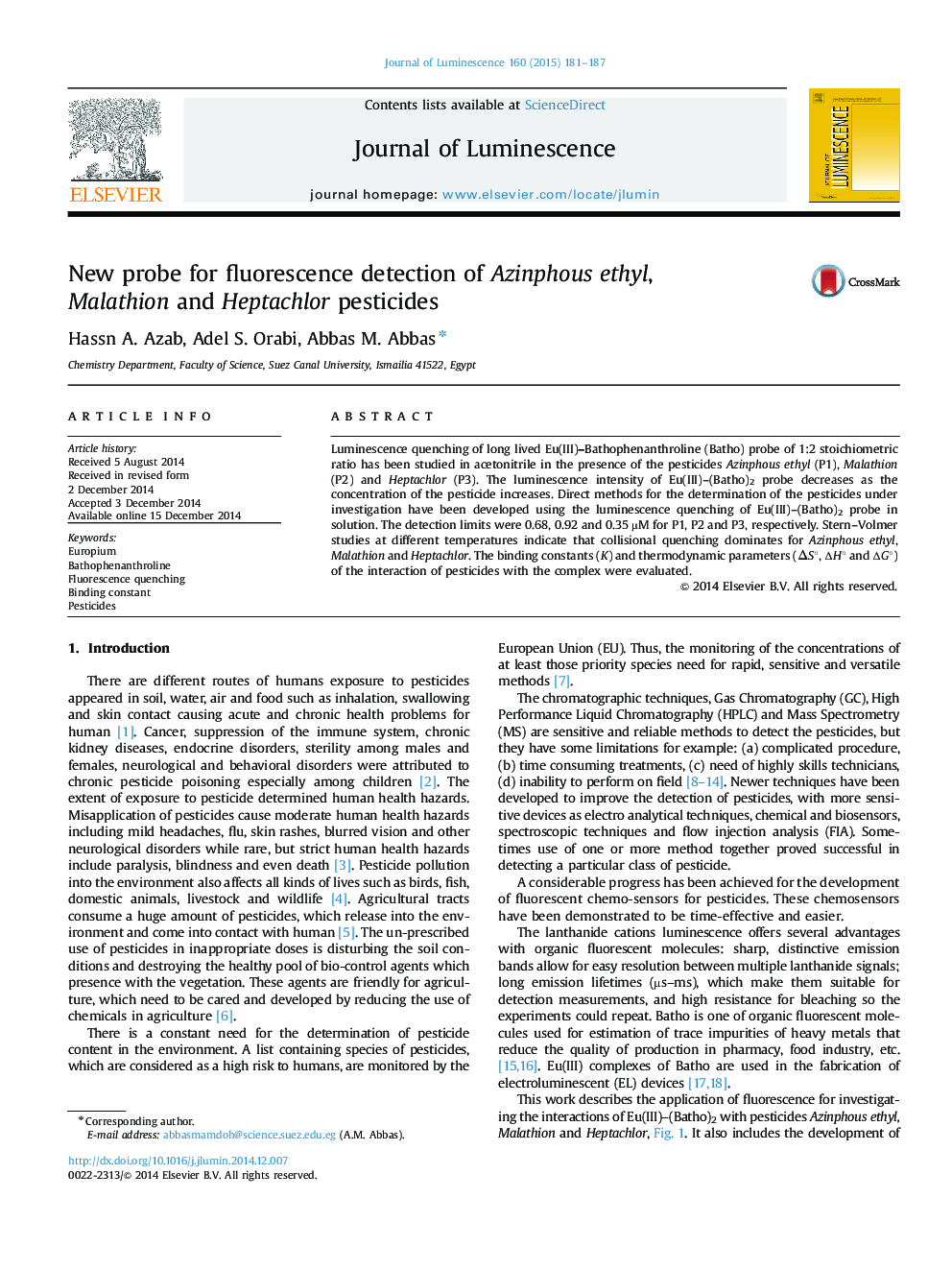| Article ID | Journal | Published Year | Pages | File Type |
|---|---|---|---|---|
| 5399369 | Journal of Luminescence | 2015 | 7 Pages |
Abstract
Luminescence quenching of long lived Eu(III)-Bathophenanthroline (Batho) probe of 1:2 stoichiometric ratio has been studied in acetonitrile in the presence of the pesticides Azinphous ethyl (P1), Malathion (P2) and Heptachlor (P3). The luminescence intensity of Eu(III)-(Batho)2 probe decreases as the concentration of the pesticide increases. Direct methods for the determination of the pesticides under investigation have been developed using the luminescence quenching of Eu(III)-(Batho)2 probe in solution. The detection limits were 0.68, 0.92 and 0.35 µM for P1, P2 and P3, respectively. Stern-Volmer studies at different temperatures indicate that collisional quenching dominates for Azinphous ethyl, Malathion and Heptachlor. The binding constants (K) and thermodynamic parameters (ÎS°, âH° and âG°) of the interaction of pesticides with the complex were evaluated.
Related Topics
Physical Sciences and Engineering
Chemistry
Physical and Theoretical Chemistry
Authors
Hassn A. Azab, Adel S. Orabi, Abbas M. Abbas,
